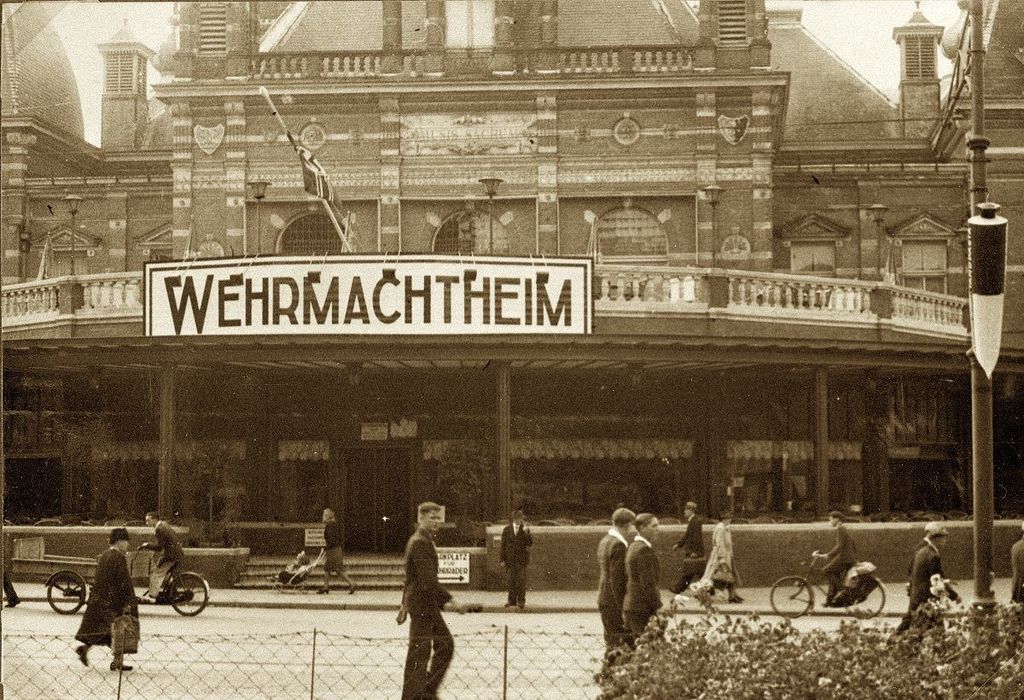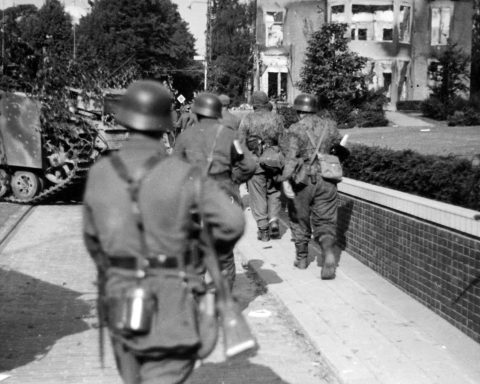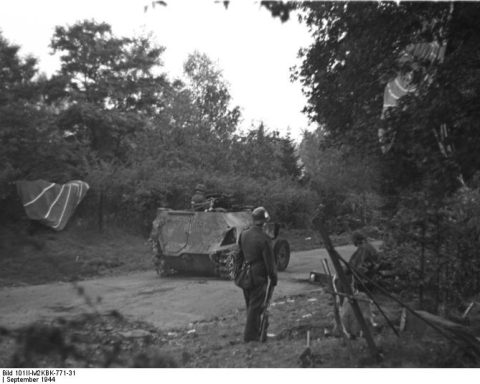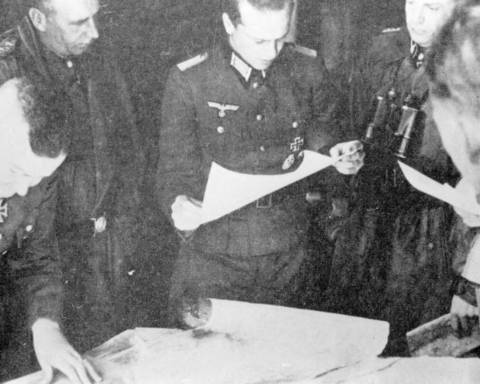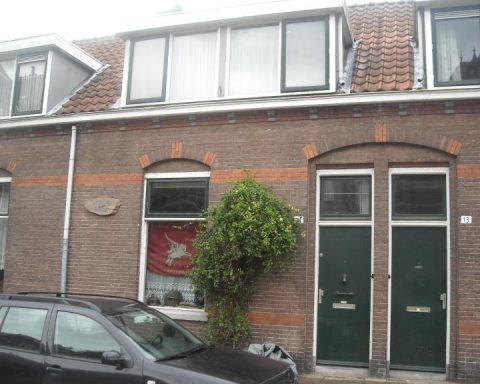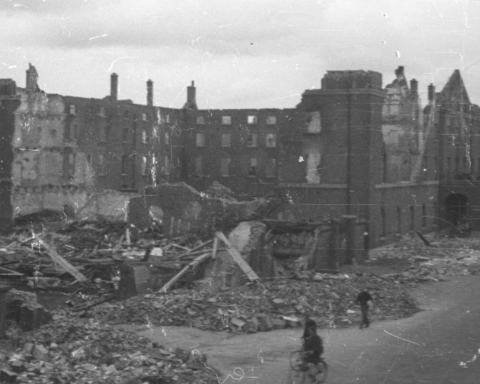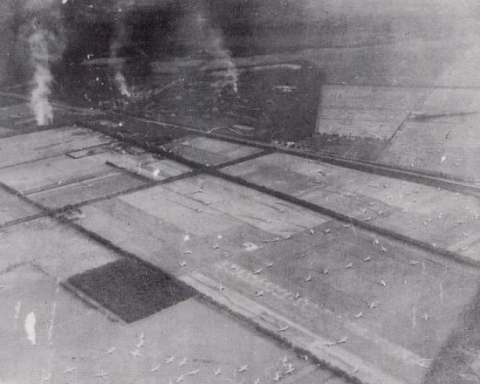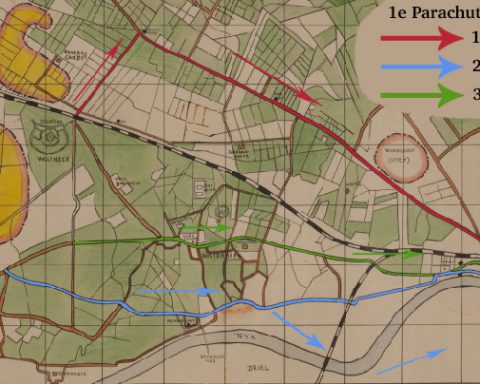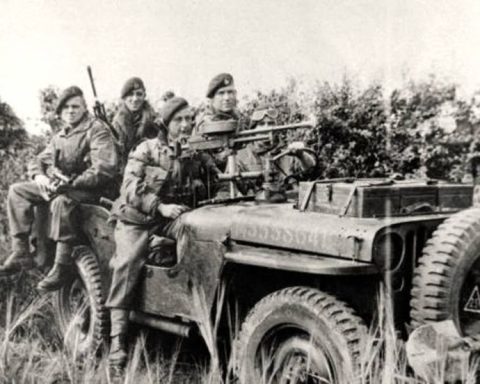According to the. original plans for Operation Market Garden, the 1st British Airborne Division was to occupy all of Arnhem before being relieved by the Allied ground forces.
The Airborne Division’s headquarters would be located in concert hall Musis Sacrum. Musis was chosen because it was close to the Rhine Bridge and because it was centrally located on the Velperplein on the edge of the city center.
During the war, Musis Sacrum was used by the Germans as Wehrmachtheim. Musis Sacrum was used as a relaxation area for the German soldiers in Arnhem. There were regular concerts and films were shown. Musis Sacrum was also used by the Dutch national socialist party (NSB) for holding meetings.
After the airborne landings at Wolfheze, Musis Sacrum would be seized by the advancing British troops and used as general Roy Urquhart’s headquarters for the British Airborne Division. At least that was the plan.
Temporary headquarters
Immediately after the airborne landings on Sunday September 17, General Urquhart’s staff set up a few tents on the edge of the landing area where the glider planes had landed. For a day, this place was used as a temporary headquarters.
Because the British radios barely functioned, the headquarters of the division received few reports of the advance to Arnhem. However, it was now clear that there were many more German units in Arnhem than previously anticipated.
Not receiving any messages, General Urquhart decided to investigate in a jeep himself. He stayed away for thirty hours. For part of that time, the commander of the Airborne Division had to hide in an attic at the Zwarteweg in the west of Arnhem.
To Hartenstein
On Monday September 18, Colonel Charles Mackenzie, Urquhart’s chief of staff, decided to move the headquarters closer to Arnhem. A move to Musis Sacrum, as intended, was out of the question. But Mackenzie hoped he would receive more radio messages if he moved the headquarters closer to the attacking British forces.
Mackenzie passed the Hartenstein hotel in Oosterbeek, which seemed suitable as a new temporary accommodation. In the Hartenstein hotel, the soldiers of the headquarters found neatly laid tables.
Those tables had been hastily left by the Germans the day before after the British airborne landings. Hartenstein was until then used by the staff of Field Marshal Model, who was headquartered at the Tafelberg hotel, a little further away. The Germans had been about to join the table when they had to flee from the British airborne soldiers.
The divisional headquarters was established in the Hartenstein hotel with the intention of moving the headquarters to Musis Sacrum as soon as the Germans had been dealt with in Arnhem.
It turned out differently. On Tuesday September 19, the British were driven back in the last attack on Arnhem. Partly because the headquarters of the division was located in Oosterbeek, the hotel became the center of the British perimeter .
Cup of coffee
Nevertheless, Musis Sacrum still played a role during the Battle of Arnhem. After the airborne landings on Sunday September 17, some British airborne soldiers allegedly entered Musis Sacrum. The incident was described after the war by German General Walter Harzer, who led the 9th SS Armored Division Hohenstaufen.
“A handful of British paratroopers entered the Wehrmachtheim and ordered the Germans to raise their hands. In the Wehrmachtheim there were about 80 German soldiers drinking coffee and playing cards. Their weapons were against a wall. Then the British drank a cup of coffee and they walked away again.”
The British soldiers were probably soldiers of the 2nd Battalion of John Frost, who managed to reach the Rhine Bridge that evening. It is quite possible that some of his soldiers went to see Musis Sacrum to see if the division’s headquarters had already arrived here.
The story seems unlikely, knowing that at the time west of Oosterbeek there was hard fighting between British and German soldiers. But the situation in Arnhem was chaotic after the airborne landings.
Harzer: “When the first British paratroopers arrived in Arnhem, there was great confusion.”
The story may therefore be quite true. During the first day of the Battle of Arnhem, not all German soldiers in Arnhem were aware of the British airborne landings.
“For you Tommy, ze war is over”
In the course of the Battle of Arnhem, Musis Sacrum was used by the Germans as a shelter for the hundreds of British prisoners of war they had made. British prisoners of war were transported from Musis Sacrum to POW camps in Germany.
Especially on Tuesday 19 September, many Britons were captured in their attack on the bridge via the Utrechtseweg and the Onderlang. That day, General Bittrich noted that the Germans had taken a total of 1,700 British prisoners of war.
It seems like a cliché, but many British airborne soldiers said after the war that when they were captured, they heard the phrase “For you Tommy, ze war is over” from German soldiers.

